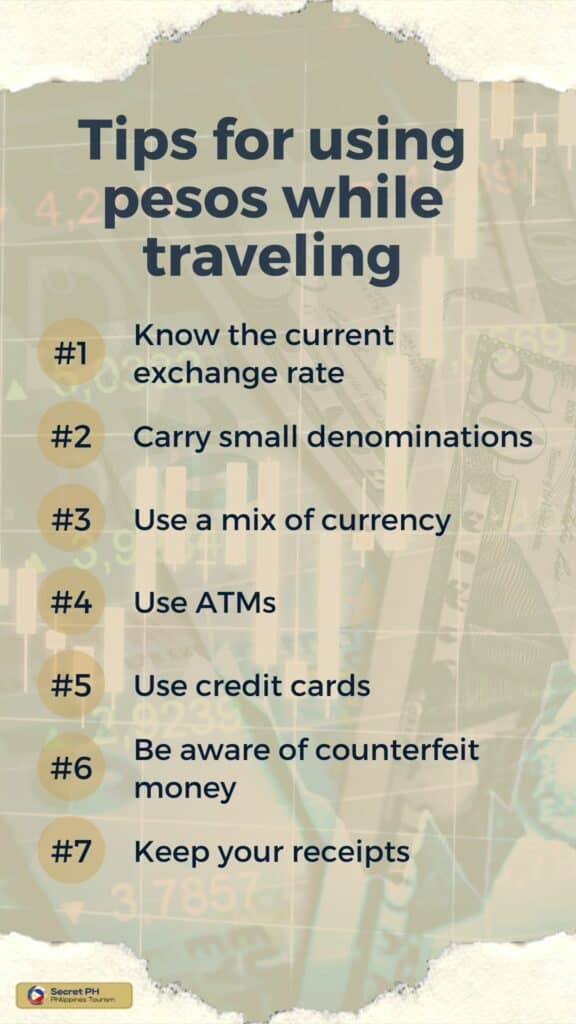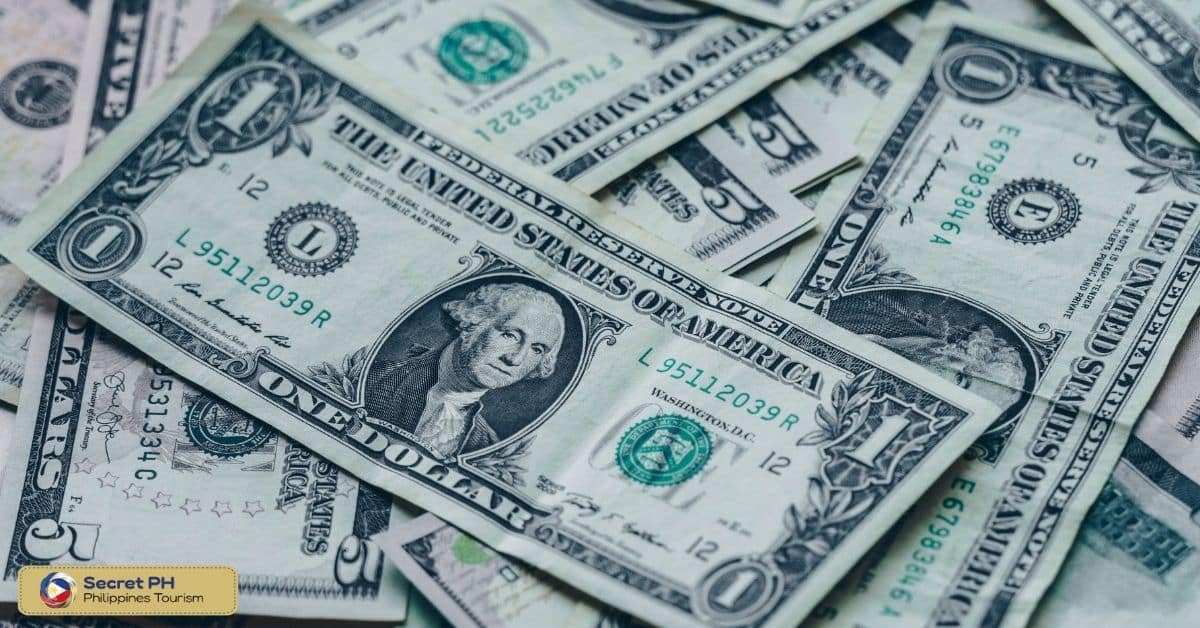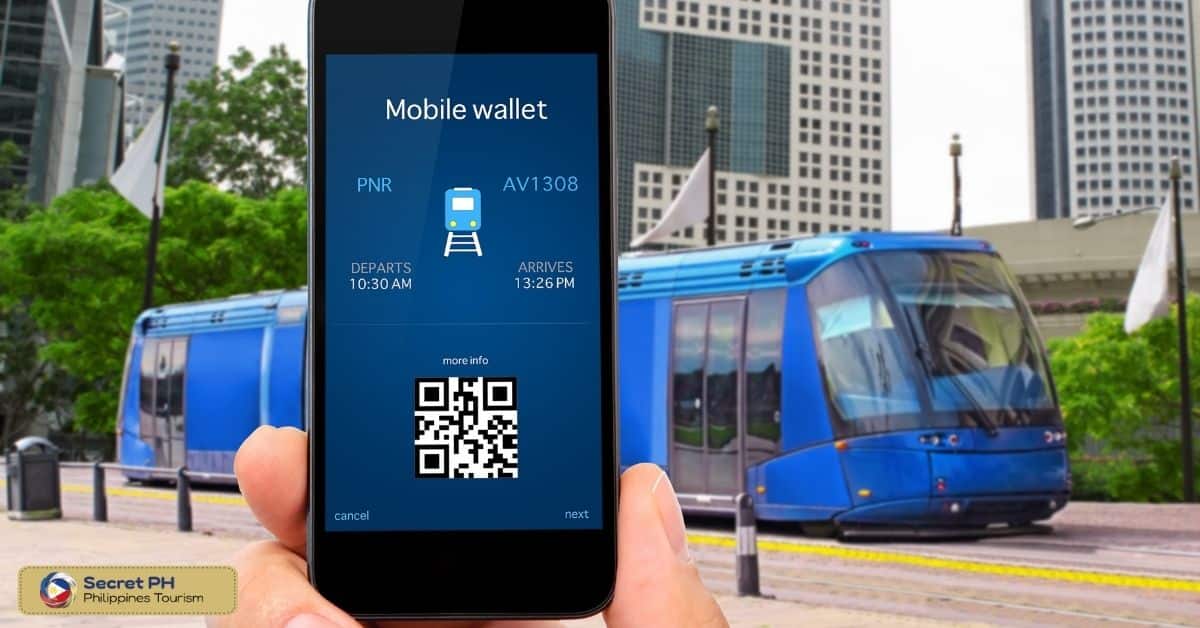Explore the world of currency conversion in the Philippines with our beginner’s guide. From pesos to dollars and beyond, learn how to navigate exchange rates, find the best methods for conversion and stay safe while using different forms of payment.
This blog post will provide a beginner’s guide to understanding currency conversion in the Philippines. We’ll discuss what tools are available for keeping up with current exchange rates, and we’ll explain how to obtain Philippine pesos while traveling outside the country.

Importance of Currency Conversion for Travelers to the Philippines
Currency conversion is an essential aspect of travel, and it is especially important for travelers visiting the Philippines. The Philippines uses the Philippine peso as its official currency, and it is important for travelers to understand the value of their own currency in relation to the peso in order to budget effectively and avoid overspending. Additionally, understanding the exchange rate can help travelers to make informed decisions about where and how to exchange their currency.
Currency conversion is also important for travelers to the Philippines because not all places accept the same forms of payment. While the peso is widely accepted, some places may also accept US dollars or other foreign currencies, and some may not accept credit cards or traveler’s checks. Knowing what forms of payment are accepted where can help travelers to plan ahead and ensure that they have the appropriate currency or payment method on hand.
Furthermore, currency conversion is important for travelers to the Philippines because it can help them to avoid scams and fraud. Knowing the current exchange rate and understanding how to convert currency safely can help travelers to spot and avoid potential scams, such as being overcharged for goods or services.

Understanding the Philippine Peso
The Philippine peso is the official currency of the Philippines and it is important for travelers to understand its value and usage while visiting the country. Understanding the Philippine peso is a crucial step in budgeting effectively, making informed decisions about currency exchange and avoiding potential scams and frauds.
History of the Philippine Peso
The Philippine peso has a long and rich history that dates back to the Spanish colonization of the Philippines in the 16th century. The Spanish introduced the silver coin called “real de a ocho” or “piece of eight” which became widely used in the Philippines. The coin was also known as the Spanish peso and it was then abbreviated as “P” which later became the Philippine peso.
During the American colonization, the Philippine peso was pegged to the US dollar at a rate of 2 pesos to 1 dollar. This exchange rate remained in place until the 1960s. In the 1970s, the peso was devalued several times due to economic instability and inflation, leading to a decrease in its value.
In the 1990s, the Central Bank of the Philippines introduced new banknotes and coins that featured Filipino historical figures and landmarks. The Central Bank also tried to stabilize the peso by controlling inflation and implementing monetary policies.
Today, the Philippine peso is a widely accepted currency in the Philippines, and its exchange rate fluctuates based on global economic conditions. The Central Bank of the Philippines continuously monitors the exchange rate and takes measures to ensure the stability of the peso.

Current exchange rate
- The current exchange rate for the Philippine peso (PHP) against the US dollar (USD) is around 1 PHP = 0.02 USD. This means that 1 US dollar is equivalent to around 50 Philippine pesos.
- The current exchange rate for the Philippine peso against the Euro (EUR) is around 1 PHP = 0.013 EUR. This means that 1 Euro is equivalent to around 76 Philippine pesos.
- The current exchange rate for the Philippine peso against the Japanese yen (JPY) is around 1 PHP = 1.5 JPY. This means that 1 Japanese yen is equivalent to around 0.67 Philippine pesos.
- The current exchange rate for the Philippine peso against the Chinese Yuan (CNY) is around 1 PHP = 0.1 CNY. This means that 1 Chinese Yuan is equivalent to around 10 Philippine pesos.
- The current exchange rate for the Philippine peso against the Singapore dollar (SGD) is around 1 PHP = 0.03 SGD. This means that 1 Singapore dollar is equivalent to around 33 Philippine pesos.
Please note that the exchange rate fluctuates constantly due to various economic factors, therefore you should check the latest exchange rate before any transaction. These rates are based on the information available on the date of this response and are subject to change.
Common denominations and coinage
Understanding the Philippine Peso is an essential part of any financial planning. It is important to be familiar with common denominations and coinage as they are used on a daily basis in the country. Knowing the basic denominations better allows you to use the currency more effectively in all aspects of your life.
| Philippine Peso Profile | |
| Symbol | ₱ |
| ISO 4217 code | PHP |
| Central bank | Bangko Sentral ng Pilipinas |
| Currency subunits | Sentimo = 1/100 |
| Denominations | Banknotes: ₱20, ₱50, ₱100, ₱200, ₱500, ₱1,000 |
| Coins: 1, 5, 10, 25 sentimos, ₱1, ₱5, ₱10, ₱20 | |
Tips for using pesos while traveling
It’s important to get familiar with the currency and know the exchange rate prior to your visit, as well as understand any costs that may come with exchanging money. Knowing what to expect can make the entire experience stress-free and enjoyable. With these helpful tips for using Pesos while travelling, you will be sure to have an incredible trip.

- Know the current exchange rate: Before traveling, research the current exchange rate of your currency against the Philippine peso. This will help you budget effectively and make informed decisions about currency exchange.
- Carry small denominations: It’s always helpful to carry small denominations of pesos, as it will make it easier to make small purchases or pay for transportation.
- Use a mix of currency: It’s good to have a mix of both pesos and foreign currency in case you need to make a purchase in a place that only accepts the foreign currency.
- Use ATMs: ATMs are widely available in the Philippines and can be used to withdraw pesos. Be sure to check with your bank about any fees for using ATMs abroad and also check the safety of the area before using an ATM.
- Use credit cards: Some places in the Philippines accept credit cards, but be aware of the exchange rate and any foreign transaction fees that may be charged by your bank.
- Be aware of counterfeit money: Be aware of the security features of the Philippine peso banknotes and coins, and be cautious of accepting suspicious-looking currency.
- Keep your receipts: Keep your receipts from any currency exchange transactions, as you may need them to prove the amount of currency you brought into the country when you leave.
Currency Conversion
Currency conversion has become an essential part of the Philippines’ global economy. With foreign investments, businesses, and travel come the need to convert from one currency to another. With this comes the convenience and speed with which individuals can make transactions over a variety of services that allow for quick conversion of multiple currencies.
Knowing about these services is important for anyone dealing with money transfers in and out of the Philippines, or international investments.
Different Methods of Currency Conversion
Currency conversion plays an important role in the world economy, especially when it comes to determining the exchange rate in countries like Philippines. Different methods of currency conversion include the traditional bank exchange rates, online converter tools, and money transfer services. Discovering each approach can help you make an informed decision on which method best suit your individual needs.
- Currency Exchange Bureaus: Currency exchange bureaus are commonly found in airports, tourist areas, and some banks. These bureaus provide currency conversion services and are a convenient option for travelers. However, it is important to compare the exchange rates offered by different bureaus and also check for any additional fees.
- ATMs: Automatic Teller Machines (ATMs) are widely available in the Philippines and can be used to withdraw pesos. However, be sure to check with your bank about any fees for using ATMs abroad and also check the safety of the area before using an ATM.
- Credit Cards: Some places in the Philippines accept credit cards, but be aware of the exchange rate and any foreign transaction fees that may be charged by your bank.
- Mobile Wallets: Mobile wallets such as GCash and PayMaya are gaining popularity in the Philippines as a method of payment, and also allow users to convert their foreign currency to pesos.
- Online currency exchange: You can also use online currency exchange platforms like PayPal, Transferwise and Xoom to convert your currency to pesos.
- Banks: Banks in the Philippines also offer currency conversion services, but it is best to check with your bank in advance about any fees and the exchange rate they offer.

Pros and cons of using credit cards, ATMs, and currency exchange bureaus
In a globalized Philippines, currency exchange bureaus, credit cards and ATMs are important options for travelers. Having an understanding of the pros and cons associated with using these services can be extremely helpful when deciding on what methods to use for payment or exchanging money.
| PROS | CONS | |
| Credit cards | Convenience: Credit cards are widely accepted in most places, making it easy to make purchases. | Foreign transaction fees: Some credit card companies may charge additional fees for transactions made in foreign currencies. |
| Safety: Carrying a credit card is generally safer than carrying large amounts of cash. | Exchange rate: The exchange rate offered by credit card companies may be lower than that offered by currency exchange bureaus. | |
| Rewards: Some credit cards offer rewards or cashback, which can be beneficial for travelers. | ||
| ATMs | Widely available: ATMs are widely available in the Philippines, making it easy to withdraw cash. | Fees: Some banks may charge additional fees for using ATMs abroad. |
| Convenient: Withdrawing cash from ATMs is a convenient option for travelers. | Safety: It’s important to be aware of the safety of the area before using an ATM. | |
| Currency exchange bureaus | Competitive exchange rates: Currency exchange bureaus may offer better exchange rates than other methods of currency conversion. | Additional fees: Some currency exchange bureaus may charge additional fees. |
| Convenience: Currency exchange bureaus are commonly found in airports, tourist areas, and some banks, making them a convenient option for travelers. | Limited locations: Currency exchange bureaus may not be as widely available as ATMs or credit card acceptance. |
Other Forms of Payment
Not long ago, cash was the only form of payment accepted in stores, however today merchants accept a variety of alternatives including debit or credit cards and mobile digital wallets. Other Forms of Payment also include cheques, wire transfers, contactless payment systems as well as cryptocurrencies.
The Use of US Dollars in the Philippines
The use of US Dollars in the Philippines is widespread, with many people using it in conjunction with other forms of payment. Although Philippine Pesos are the official currency, US Dollars are often preferred when it comes to larger purchases, enabling a more stable rate of exchange. Furthermore, using the US Dollar throughout everyday transactions simplifies matters for those dealing in tourism or international business.

Alternative Forms of Payment (mobile wallets and cryptocurrency)
Mobile wallets are applications on one’s smartphone that allow users to send and receive money, store credit cards, and track expenses; whereas cryptocurrency is a digital currency with encryption techniques used to control its creation and transactions, as well as verify transfers.
Exploring these alternative forms of payment can bring vast advantages, including preservation of anonymity, no transaction fees or banking charges, faster cross-border payments. With low foreign exchange costs, increased customer loyalty, improved customer data security, reduced fraud risk and much more.

Cryptocurrencies
Cryptocurrencies have seen significant growth within the Philippines in recent years, with a variety of ways to buy and sell them. Popular exchanges include Coins.ph and PDAX, while more unique payment options exist as well, including cash deposits and remittance centers. This has led to a rise in the number of merchants that accept cryptocurrencies as payment in the Philippines, providing people with a wide range of options for handling their finances.

In Conclusion
In conclusion, currency conversion can be a confusing and intimidating process, particularly when dealing with unfamiliar currencies. However, with the right knowledge and resources, it can be a simple and straightforward task.
The Philippines, being a popular tourist destination, has a robust currency exchange market with many options for converting pesos to dollars and other currencies. By understanding the exchange rates, fees, and regulations, individuals and businesses can confidently navigate the currency conversion process and make informed decisions.








